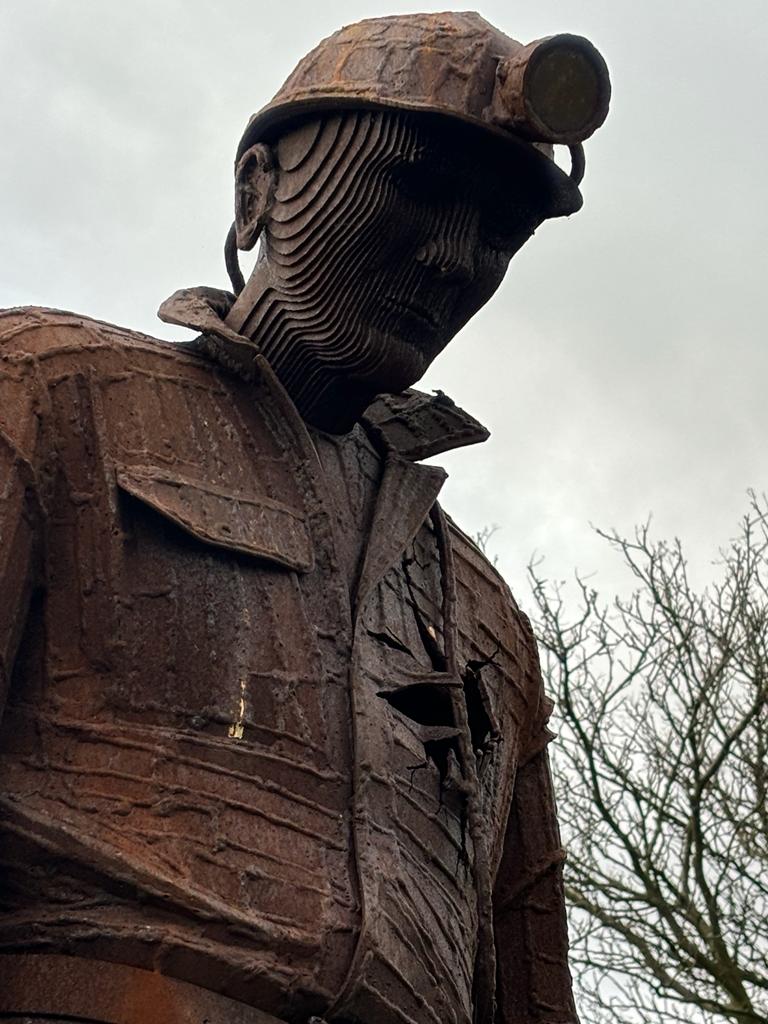
In my previous post, I wrote about the explosion of 1757 that killed 16 men at the Ravensworth Ann Pit, the mine on which The Angel of the North stands. Fifteen men were killed by the blast, and one died later. A partial list of the who died is on the Durham Mining Museum’s website, alongside the details of a further 64 men who died as a result of accidents while working at the mine. Before 1850 there was no legal requirement to record fatal colliery accidents; while the Durham Mining Museum commemorates 20,900 on-site deaths at collieries in County Durham and Northumberland, the number of men and boys who died will therefore be much greater. This figure also does not include those men who died from mining-related illnesses such as emphysema and pneumoconiosis, or those who died in the days or months after being injured.
In his history of Birtley, Robert Hull documents that in 1741 George Humble of Birtley had opened a pit known as Birtley Colliery. Prior to this, the Bishop of Durham, George Winship, had leased the Birtley land to a series of tenants for coal mining and routes had been put in place to transport coal to the River Tyne, probably leading to the staiths at Felling. In 1731, there had been a dispute over working conditions, described as a ‘mutinous revolt’, but very little is known about this incident. Hull records a description of the Birtley mine in 1750, just a few years before the explosion nearby:
There were two pits visible and one covered by Humble’s Waggonway besides the Stappel pit which Humble spoke to where there was a vacuum at about 5 fathoms. Winship had a pit at Stappel, waste heaps prove this. By the widths of the shafts opened there must have been house ginns for no Jack Roll (a wooden windlass turned by hand) could draw the water at so wide a pit and he has no doubt that the Waggonway pit will be found in the Winship’s working pit. (p. 23)
Below, I list some of the miners who died in the mine explosion of 1757, using the information that is available on the Mining Museum webpage for the colliery. Even though this event has long passed out of living memory, it is fitting on a blog that is dedicated to the Angel of the North site as a memorial to commemorate the names that have been passed down. Although no women are named, it is hard not to imagine the impact on their lives in reading the names of those killed by the explosion, which in some cases claimed two generations of the same family.
The names of those miners who died from individual accidents at the Ravensworth Ann Pit can be found on the Durham Mining Museum webpage listed in the references below.
In Memoriam:
John Brown, address: Penny Fine. Buried: St Andrew’s Churchyard, Lamesley, on 12 June 1757.
John Brown, son of John Brown, address: Penny Fine. Buried: St Andrew’s Churchyard, Lamesley, on 12 June 1757.
Ralph Brown, son of John Brown, address: Penny Fine. Buried: St Andrew’s Churchyard, Lamesley, on 12 June 1757.
John Carr, address: Cox Close. Buried: St Andrew’s Churchyard, Lamesley, on 12 June 1757.
John Cole, address: Cox Close. Buried: St Andrew’s Churchyard, Lamesley, on 12 June 1757.
Paul Gardiner, address: Cox Close. Buried: St Andrew’s Churchyard, Lamesley, on 12 June 1757.
Paul Gardiner, address: Cox Close. Buried: St Andrew’s Churchyard, Lamesley, on 12 June 1757.
William Gardiner, address: Ravensworth. Buried: St Andrew’s Churchyard, Lamesley, on 12 June 1757.
Thomas Garfott, son of William Garfott, address: Kibblesworth. Buried: St Andrew’s Churchyard, Lamesley, on 12 June 1757.
William Garfott, address: Kibblesworth. Buried: St Andrew’s Churchyard, Lamesley, on 12 June 1757.
William Hewson, address: Street Gate. Buried: St Andrew’s Churchyard, Lamesley, on 12 June 1757.
William Hewson, son of William Hewson, address: Street Gate. Buried: St Andrew’s Churchyard, Lamesley, on 12 June 1757.
Matthew Morrowley, address: Kibblesworth. Buried: St Andrew’s Churchyard, Lamesley, on 12 June 1757.
James Richardson, address: Cox Close. Buried: St Andrew’s Churchyard, Lamesley, on 12 June 1757.
A series of serious explosions in the coal mines of the north east led the Rector of Bishopwearmouth to search for a safer way of lighting coalmines than the open candles that miners routinely carried underground. Almost sixty years after the explosion at the Ravensworth Ann Pit, Humphrey Davy was commissioned to work intensively on the problem. After two months in the laboratories of the Royal Institution, Davy made the first prototypes of the miners’ safety lamp in 1815. In January 1816, the lamp was successfully tested at Hebburn Colliery and it was immediately put into production. The lamp significantly reduced deaths by explosion in the mines, but it also enabled mining at greater depths, which meant that coal mining remained a very dangerous occupation.
References
Durham Mining Museum, ‘Ravensworth Ann Colliery’, https://www.dmm.org/colliery/-003.htm
Robert Hull, Birtley: The Growth of an Industrial Community in the Nineteenth Century, with a foreword by Antony Gormley (Tudhoe, County Durham: Durham County Local History Society, 2023).
Royal Institution, ‘Humphry Davy’s miners’ safety lamp’, https://www.rigb.org/explore-science/explore/collection/humphrey-davys-miners-safety-lamp
